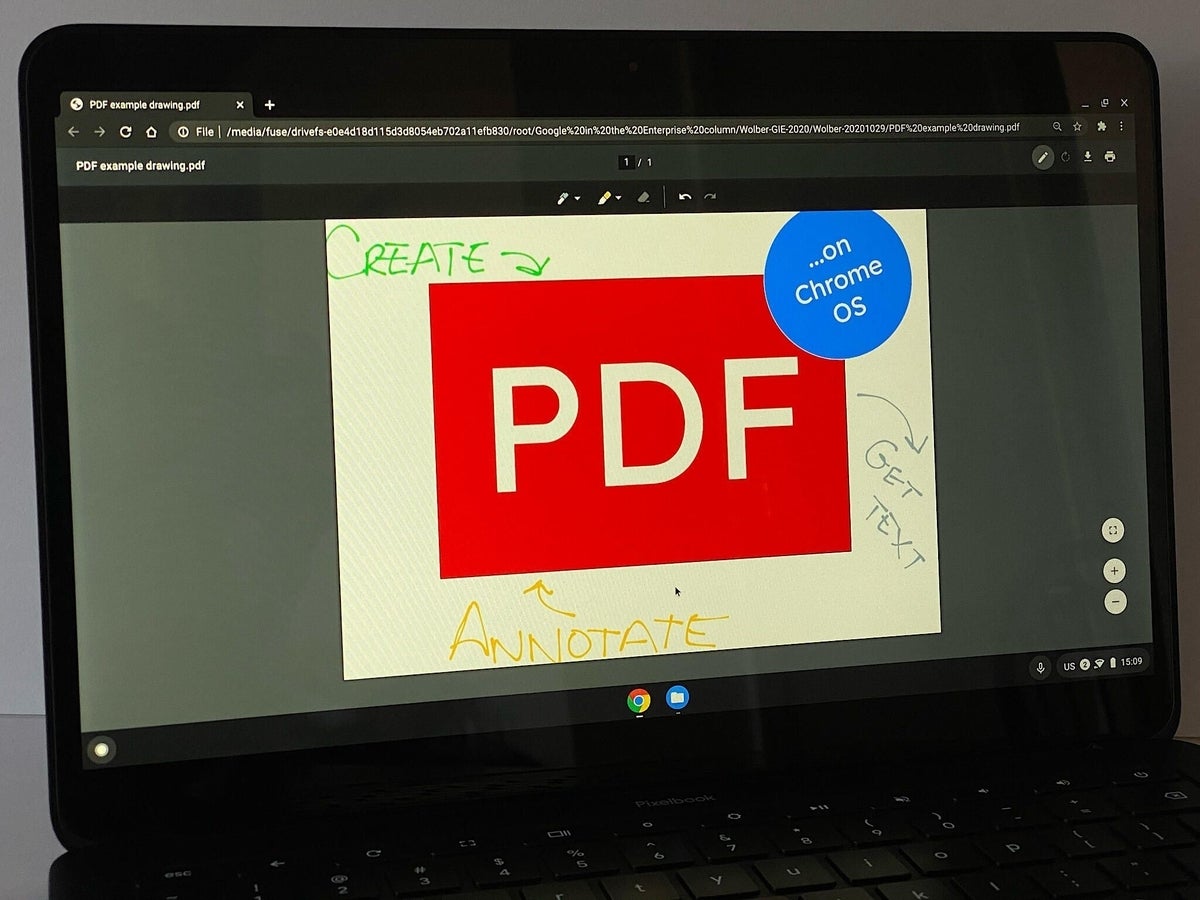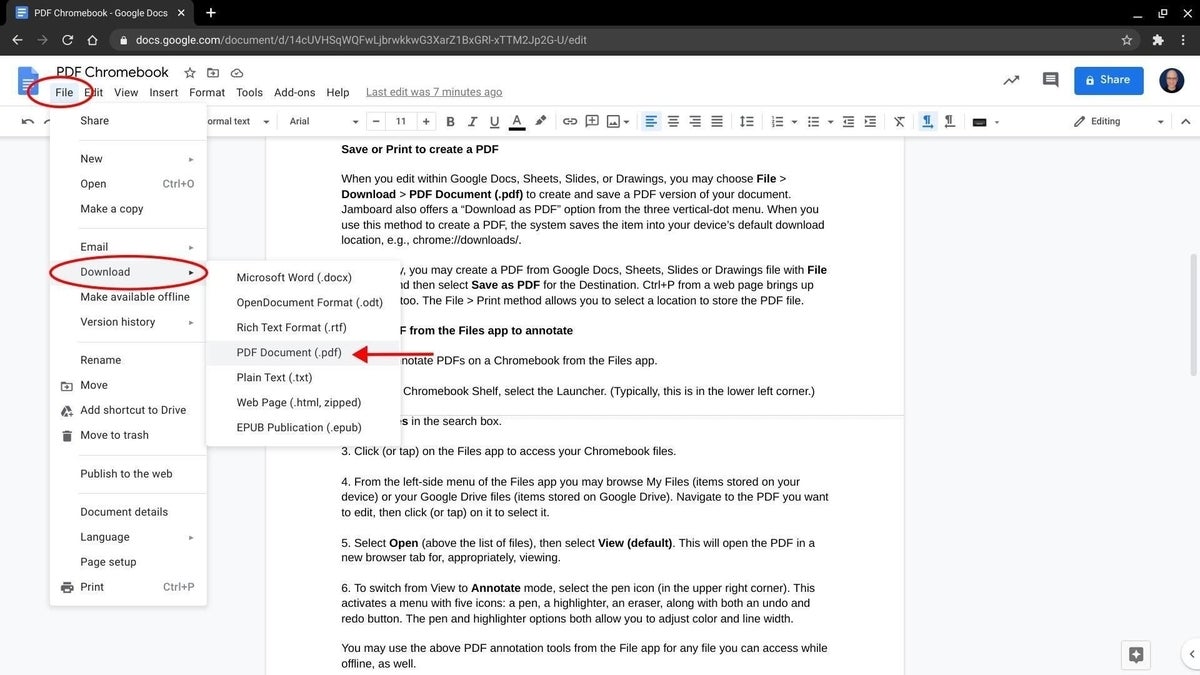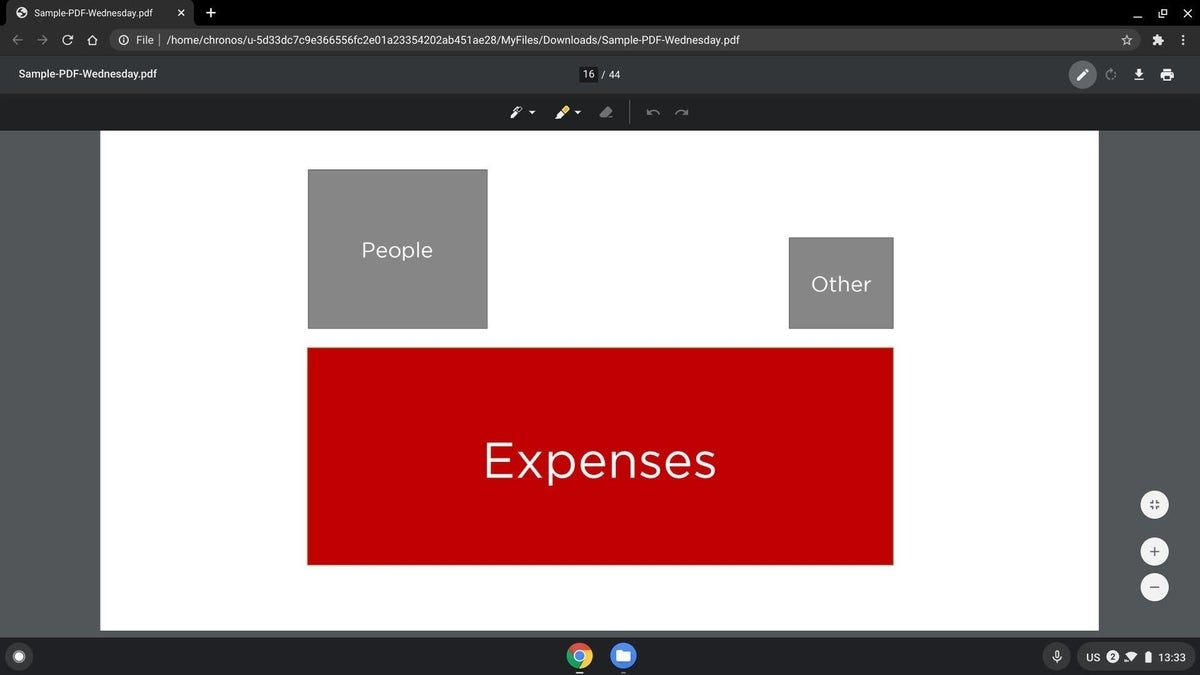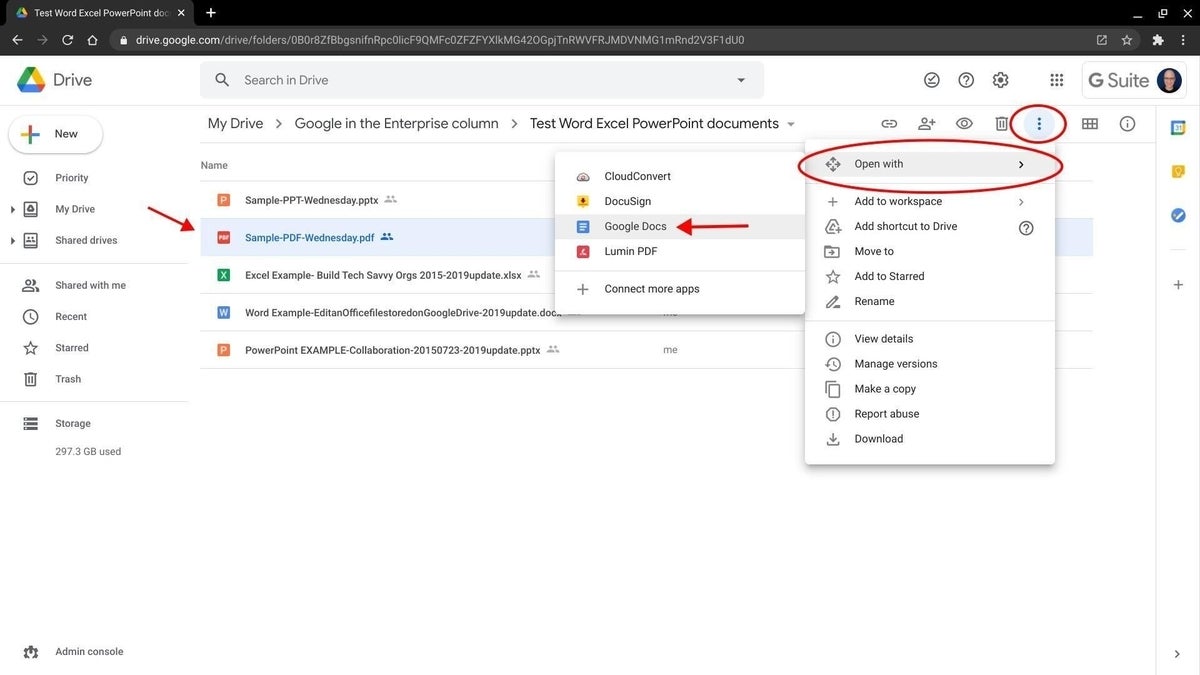
We may earn from vendors via affiliate links or sponsorships. This might affect product placement on our site, but not the content of our reviews. See our Terms of Use for details.
Learn how to use tools to create, annotate, and extract text from a PDF on a Chromebook.
People who use a Chromebook are likely familiar with at least a couple of common ways to work with the Portable Document Format (PDF) created by Adobe in 1993 that preserves a document’s layout and design. Receive a PDF in Gmail? Open it to display the file or save the PDF to Google Drive. Want to find a PDF on Google Drive? Search for text in PDFs stored on drive.google.com. Need a PDF for a meeting? Attach or link to a PDF in Google Calendar event details.
Follow the steps below to use a Chromebook to create, annotate and extract text from a PDF–all with native Google apps and tools. If you need additional PDF editing capabilities, you might also explore the third-party apps mentioned below. Open your Chromebook and sign in to get started!
SEE: Google Sheets: Tips and tricks (TechRepublic download)
When you edit within Google Docs, Sheets, Slides, or Drawings, choose File | Download | PDF Document (.pdf) to create and save a PDF version of your document (Figure A).
Figure A

Jamboard also offers a Download As PDF option from the three vertical-dot menu. When you use this method to create a PDF, the system saves the item into your device’s default download location (e.g., chrome://downloads/).
Alternatively, you may create a PDF from Google Docs, Sheets, Slides, or Drawings file with File | Print | and then select Save As PDF for the Destination (Figure B). Ctrl+P from a web page brings up this option, too. The File | Print method allows you to select a location to store the PDF file.
Figure B
You may annotate PDFs on a Chromebook from the Files app (Figure C).
Figure C

4. From the left-side menu of the Files app you may browse My Files (items stored on your device) or your Google Drive files (items stored on Google Drive). Navigate to the PDF you want to edit, then click or tap on it to select it.
5. Select Open (above the list of files), then select View (Default) (Figure D). This will open the PDF in a new browser tab for viewing.
Figure D

6. To switch from View to Annotate mode, select the pen icon in the upper-right corner (Figure E). This activates a menu with five icons: A pen, a highlighter, an eraser, an undo button, and redo button. The pen and highlighter options both allow you to adjust color and line width.
You may use the above PDF annotation tools from the File app for any file you can access while offline, as well.
Figure E

When you open a PDF stored on Google Drive with Google Docs, the system converts the PDF into images and text in a Google Doc.
Figure F

If the PDF contains complex images and layouts, it may not necessarily display accurately. However, PDF files that are primarily text, such as articles or books, are more likely to provide access to the contained text.
Third-party apps, such as Kami and Adobe Acrobat, offer even more powerful PDF editing capabilities to people who use a Chromebook (Figure G).
Figure G
People who need to work offline (as well as online) might explore Kami, which includes markup, comment, text, equation, and shape tools, along with PDF split and merge functions. Kami offers a free basic plan, a professional plan, discounted pricing for teachers, as well as plans that include features often used in the legal profession, such as Bates numbering. People who use Chromebooks that support Android apps could consider the Adobe Acrobat Android app, with many features available for free, although an upgrade (approx. $9.99 per month) adds editing capabilities. Acrobat is also available as part of Adobe’s Creative Cloud subscription service.
Do you often work with PDF files on a Chromebook? What tools do you use to view, annotate, or edit PDFs on your Chromebook? Let me know your favorite PDF Chromebook apps (for online or offline use) either in the comments below, or on Twitter (@awolber).
From the hottest programming languages to commentary on the Linux OS, get the developer and open source news and tips you need to know. Delivered Tuesdays and Thursdays
From the hottest programming languages to commentary on the Linux OS, get the developer and open source news and tips you need to know. Delivered Tuesdays and Thursdays
Share ArticleAs a consultant, Andy helps nonprofit organizations understand and leverage technology. He taught the Nonprofit and Government Technology class for Grand Valley State University's Public Administration program for several years. His prior experience includes staff positions with Michigan Nonprofit Association, NPower Michigan, the Dallas Historical Society, Dallas Theater Center, Dallas Black Dance Theatre, and volunteer leadership of the Technology Advisory Committee of the Grand Rapids Community Foundation, as well as the Dallas Arts District Friends. Andy lives Albuquerque, New Mexico with his wife, Liz. Their daughter, Katie, is pursuing a graduate degree in education at Vanderbilt University.